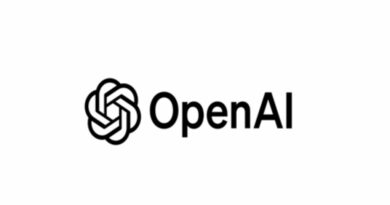AI Is Getting Cheaper
Until just recently, creating a cutting-edge large language model (LLM) was the sort of thing that required a Silicon Valley-sized budget, a warehouse full of GPUs, and a team of brainiacs who probably hadn’t seen sunlight in months. Back in 2022, the mere act of training one of these digital behemoths was a flex—an engineering feat that screamed innovation and deep pockets. Fast forward to today, and the game’s changed. A $6 million LLM? That’s so last season. The new cool kid on the block costs just $6. Yes, you read that right—six quid, a handful of change, less than a decent night out. The world of artificial intelligence is getting cheaper, and it’s happening faster than you can say “ChatGPT.”
Take the recent buzz around a project from Stanford University and the University of Washington. Researchers there have cooked up an LLM called s1, and they claim it cost them a measly $6 to train. Not $6 million, not even $6,000—just $6. That’s the kind of budget you’d blow on a couple of coffees and a pastry. Meanwhile, companies like DeepSeek, which made headlines for slashing AI training costs from $61.6 million to $6 million, are starting to look like yesterday’s news. The bar’s been lowered so far it’s practically underground, and it’s shaking up everything we thought we knew about AI development.
So, how did we get here? The answer lies in a mix of clever engineering, ruthless efficiency, and a bit of good old-fashioned competition. Back when Meta’s Llama 3.1 was burning through $61.6 million to come to life, the focus was on scale—more data, more compute, more everything. But the folks behind s1 took a different tack. They leaned hard into optimising algorithms, trimming the fat from training processes, and making do with less. It’s not about having the biggest toy in the sandbox anymore; it’s about building something smart, lean, and—crucially—cheap. This shift is a wake-up call for anyone still pouring billions into AI research. You don’t need a fortune to play the game—you just need to play it smarter, as the rise of cost-effective AI proves.
Of course, the sceptics are already circling. “A $6 LLM? Sounds like a toy, not a tool,” they mutter. And sure, s1 isn’t about to dethrone the likes of GPT-4 or Claude 3.5 in a head-to-head showdown. It’s not packing 671 billion parameters or solving quantum physics problems over breakfast. But that’s not the point. What it proves is that the barrier to entry is crumbling. You don’t need a tech giant’s bankroll to experiment with AI innovation anymore. Universities, startups, even a clever coder in their garage could whip up something useful without remortgaging their life. That’s the real story here: democratisation, not domination, driven by cheap AI models.
This trend isn’t just a fluke—it’s the future. Look at DeepSeek’s journey. The Chinese firm grabbed attention late last year with its R1 model, boasting performance on par with OpenAI’s o1 for a fraction of the cost. They used tricks like mixture-of-experts architectures and reinforcement learning to squeeze every drop of value from their hardware. Now, s1’s taken that ethos to the extreme, showing that LLM breakthroughs can happen without breaking the bank. It’s a bit like swapping a Rolls-Royce for a bicycle—sure, you lose some luxury, but you still get where you’re going.
What does this mean for the rest of us? For one, it’s a boon for AI accessibility. When the price tag drops this low, more players can join the party. Imagine small businesses training custom LLMs to handle customer service, or academics building models to crunch niche datasets—all without begging venture capitalists for a cheque. It’s also a headache for the big dogs. Companies like Nvidia, whose stock took a hit when DeepSeek flexed its efficiency, might find their GPU empires under pressure if affordable AI solutions keep stealing the spotlight. Less demand for obscene compute power could flip the industry on its head.
But let’s not get too carried away. A $6 model isn’t going to rewrite the AI playbook overnight. There’s a reason the heavy hitters still dominate—they’ve got the resources to fine-tune, scale, and deploy at a level the little guys can’t touch yet. And questions linger: How robust is s1? What corners were cut to hit that price? The researchers haven’t spilled all the beans, so we’re left guessing about the trade-offs. Still, the signal is loud and clear—AI affordability is the next frontier, and it’s coming fast, powered by relentless AI cost reduction.
So, forget DeepSeek. Forget the $6 million flex. The real headline is this: large language models are getting cheaper still, and a $6 LLM isn’t just cool—it’s a new benchmark. The race isn’t about who can spend the most anymore; it’s about who can spend the least and still come out on top.
We’d love your comments on today’s topic!
For more articles like this one, click here.
Thought for the day:
“There is only one happiness in this life, to love and be loved.” – George Sand



